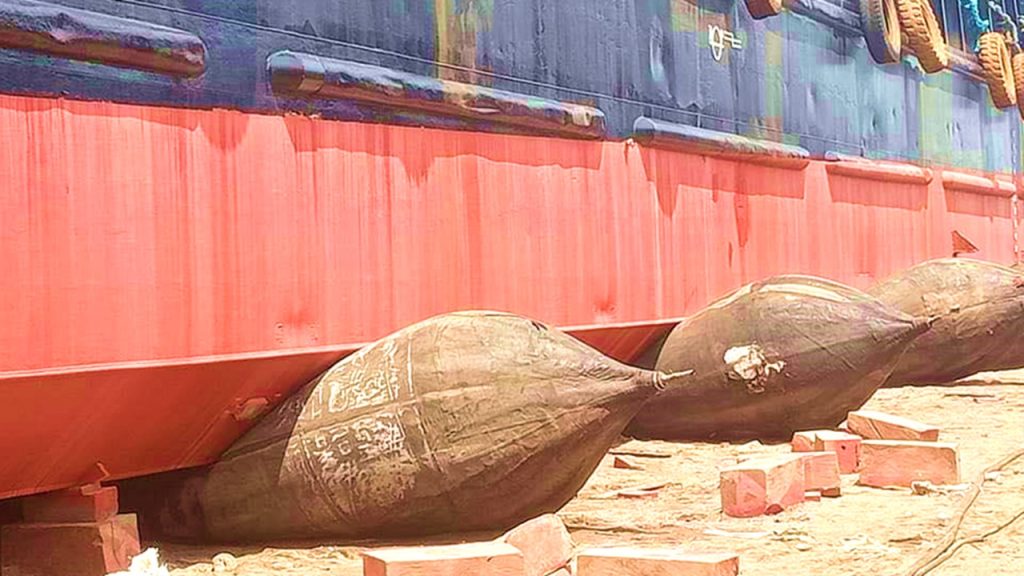The maritime industry has long been an integral part of the Philippines’ economy, with the archipelago nation playing a vital role in global trade and navigation. As ships continually traverse our vast seas, their propellers face wear and tear, demanding professional repair and maintenance services. Ship propeller repair in the Philippines is a specialized field that requires both technical expertise and meticulous attention to detail. In this article, we will explore essential engineering tips for Filipinos involved in ship propeller repair, aiming to enhance their knowledge and skills in keeping these critical components operating at peak performance. Whether you are an aspiring engineer or an experienced professional looking to refine your craft, this guide will serve as a valuable resource to elevate your ship propeller repair expertise.
Click here to view our ship propeller repair capabilities.
The Importance of Ship Propeller Repair
Proper ship propeller repair in the Philippines is crucial for the optimal performance and safety of a vessel. When a ship’s propeller becomes damaged or worn out, it can lead to decreased fuel efficiency, reduced maneuverability, and increased risk of accidents. While regular maintenance and inspections are essential, addressing propeller issues promptly through professional repair services is imperative.
One key aspect of ship propeller repair is balancing. A well-balanced propeller ensures smooth operation and minimizes vibrations that could impact the structural integrity of the vessel. Additionally, an imbalanced propeller can cause excessive wear on bearings and shafts, leading to costly repairs in the long run. By investing time and resources in proper balancing techniques during repairs, Filipino engineers contribute to extending the lifespan of both propulsion systems and entire ships.
Another vital aspect to consider when repairing a ship’s propeller is precision machining. The accuracy of machined components directly affects their performance underwater. Even slight imperfections in design or execution can lead to noise generation, cavitation damage, or loss of efficiency.
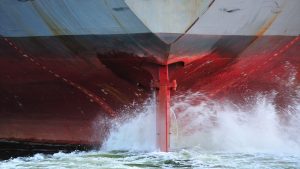
Understanding the Basics: Ship Propeller Components and Operation in the Philippines
The boat propeller is the heart of a vessel, driving it forward through the water with precision and power. It is composed of several key components that must work together seamlessly for optimal performance. One such component is the blades, which are responsible for converting the rotational energy of the propeller shaft into thrust. The number, shape, and size of the blades can vary depending on factors such as vessel size, speed requirements, and load capacity.
Another crucial component of a ship propeller is the hub. This central part connects the blades to the propeller shaft and allows them to rotate freely. The hub also plays a role in distributing hydraulic forces evenly across all blades, ensuring smooth operation and reducing stress on individual components. Understanding these basic elements is essential in diagnosing and fixing any issues that may arise during ship propeller repair.
Vessel propellers in the Philippines are complex systems that require careful attention to their various parts in order to operate effectively. By understanding how each component functions within this system, Filipino engineers can offer valuable insights during repairs or maintenance work.
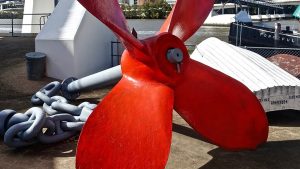
Common Issues: Identifying Problems in Ship Propellers in the Philippines
Identifying problems in boat propellers is crucial for maintaining the efficiency and performance of vessels. One common issue that often arises is cavitation, which occurs when water vapors form bubbles due to low-pressure areas on the surface of the propeller blade. These bubbles then collapse, leading to erosion and pitting on the propeller’s surface. By regularly inspecting the blades for signs of cavitation damage, ship engineers can take proactive measures to repair or replace affected propellers before further deterioration occurs.
Another problem that frequently arises with vessel propellers is corrosion. With constant exposure to seawater and its corrosive properties, it is not surprising that marine environments are harsh on metallic surfaces. Corrosion can weaken propeller blades over time, compromising their structural integrity and performance. Engineers must closely monitor the condition of the propellers through regular inspections and apply appropriate protective coatings or materials to prevent or mitigate corrosion damage effectively.
Additionally, an imbalance in a ship’s propulsion system can lead to significant issues with its overall maneuverability and fuel efficiency. Propeller imbalance occurs when there are variations in mass distribution across individual blades or even between multiple blades in multi-propeller systems. Not only does this cause excessive vibrations that affect both machinery and crew comfort aboard ships, but it also increases fuel consumption due to inefficient power transmission from engines to propel ships forward. Hence, addressing balance issues through dynamic balancing techniques such as adjusting pitch angles or redistributing blade weights becomes necessary for optimal performance and cost savings.
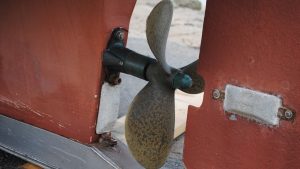
Tools and Techniques: Essential Equipment for Ship Propeller Repair
When it comes to ship propeller repair in the Philippines, having the right tools and techniques is essential for ensuring a successful outcome. One of the most important pieces of equipment is a quality propeller puller. This tool is used to safely remove the propeller from the shaft, allowing for repairs or replacements to be made. It is crucial to choose a puller that fits properly with the size and type of your ship’s propeller to avoid any damage during removal.
Another valuable tool in ship propeller repair in the Philippines is a high-quality digital torque wrench. This device allows engineers to measure and apply torque when reassembling the propeller components accurately. By using a digital wrench, you can ensure that each bolt receives the correct amount of force, preventing costly mistakes and potential accidents at sea.
In addition to these tools, employing advanced techniques such as ultrasonic thickness testing can greatly assist in evaluating the condition of the ship’s blades. This nondestructive testing method uses sound waves transmitted into the material and measures their reflection to determine the thickness and identify any areas of corrosion or wear. Incorporating this technique into your repair process can provide valuable information on which areas require attention, allowing for efficient repairs that extend the life of your ship’s propellers.
By investing in these essential tools and utilizing advanced techniques like ultrasonic thickness testing, Filipino engineers can effectively carry out ship propeller repairs in the Philippines with confidence. These tools not only improve repair efficiency but also ensure safety by minimizing potential risks associated with faulty repair work or installations.
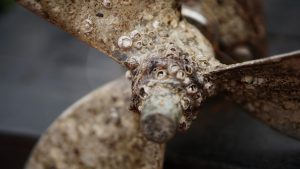
Engineering Tips for an Effective Ship Propeller Repair
When it comes to ship propeller repair in Cavite, Philippines, engineers are faced with the challenge of ensuring effective and long-lasting repairs. One important tip is to thoroughly inspect the entire propeller system before beginning any repair work. This includes examining the blades for any signs of damage or corrosion, as well as checking the bearings and seals for wear and tear. By conducting a comprehensive inspection, engineers can identify potential issues that may affect the overall performance of the propeller and address them proactively.
Additionally, it is crucial to clean and prepare the surface of both the blades and hub before applying any repairs or coatings. This involves removing any marine growth, paint, or debris using appropriate tools such as scrapers or wire brushes. By ensuring a clean surface, engineers can achieve better adhesion between coatings and surfaces during subsequent steps in the repair process.
Furthermore, proper balancing of the repaired propeller is essential for optimal performance. Balancing helps eliminate vibrations that could cause damage not only to the propeller but also to other components of the ship’s propulsion system. Engineers should accurately measure each blade’s weight after repairs have been made and adjust accordingly to achieve balance throughout all blades.
By following these engineering tips for effective ship propeller repair in Cavite, Philippines, Filipino engineers can contribute to safer navigation at sea while maintaining high-performance standards for maritime vessels.

Steps to Successful Ship Propeller Repair: A Guide for Filipinos
When it comes to ship propeller repair in Subic Bay, Cebu, Cavite, Manila, Batangas, Navotas, and Davao, Filipinos have long been recognized for their exceptional engineering skills. With a rich maritime heritage and a strong work ethic, Filipino engineers have become sought-after professionals in the global shipping industry. However, successful ship propeller repair requires more than just technical expertise. Here are some essential steps that every Filipino engineer should follow to ensure a successful repair process.
First, a thorough inspection is key. Before any repairs can take place, it is crucial to carefully inspect the propeller for any signs of damage or wear. This includes checking for cracks, cavitation erosion, bent blades, and other structural issues. By identifying potential problems at an early stage, Filipino engineers can develop an effective repair plan and prevent further complications.
Once the inspection is complete and the repairs needed are identified, precise measurements are crucial. Accurate measurements of the damaged areas of the propeller are necessary for determining the appropriate repair techniques and choosing suitable materials. Additionally, taking detailed measurements before and after repairs will help assess whether the restoration process has been successful.
Last, attention to detail during the renovation process is paramount. It is important to follow proper welding procedures when repairing cracks or fixing bent blades. The use of high-quality welding materials ensures long-lasting repairs that can withstand extreme operating conditions at sea.
Following these steps will not only contribute to a successful ship propeller repair in the Philippines but also enhance the reputation of Filipino engineers as reliable professionals in the maritime industry.
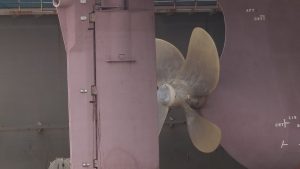
Safety First: Precautions and Protocols for Ship Propeller Repair
When it comes to vessel propeller repair in the Philippines, safety should always be the top priority. Working with large propellers and delicate machinery can be dangerous if proper precautions and protocols are not followed. One important aspect of safety is ensuring that all personnel involved in the repair process are trained and qualified. It is crucial to have a team that understands the risks associated with working on ship propellers and knows how to mitigate them.
Another essential safety precaution is using the appropriate protective gear and equipment. When working near rotating machinery, like boat propellers, it is vital to wear personal protective equipment (PPE) such as gloves, hard hats, safety glasses, and hearing protection. Protective gear acts as a shield against potential hazards like moving parts or flying debris during the repair process. Additionally, creating designated safe zones around the work area can prevent accidents by keeping unauthorized personnel at a safe distance from potential dangers.
Proper communication procedures also play a significant role in enhancing safety during ship propeller repairs. Team members must establish clear channels of communication and use standardized signaling methods while working near rotating machinery or in noisy environments. This ensures everyone remains well-informed about any changes or updates during the repair process, reducing confusion and minimizing the risk of accidents caused by miscommunication.
Overall, prioritizing safety through comprehensive training programs, adequate protective gear usage, and effective communication protocols will contribute to creating a secure environment for ship propeller repairs.

Importance of Regular Maintenance and Inspection of Ship Propeller
The vessel propeller is an integral component of any vessel, and its regular maintenance and inspection should never be overlooked. A well-maintained propeller ensures optimal performance and efficiency, reducing fuel consumption and emissions. Additionally, it helps prevent costly repairs or, in worst-case scenarios, breakdowns at sea.
Regular maintenance includes cleaning the propeller to remove marine growth, such as barnacles, that can hamper its performance. Inspections should be carried out to identify any signs of damage or wear on the blades. Even a small crack or chip can affect the balance and efficiency of the propeller, leading to decreased maneuverability.
Furthermore, proper alignment of the propeller shaft is crucial for smooth operation. Misalignment can cause excessive vibration, leading to increased mechanical stress on various components, including bearings and seals, which may result in premature failure.
In conclusion, regular maintenance and inspection of boat propellers are vital for maintaining efficient performance while avoiding costly repairs or potential breakdowns. By prioritizing these tasks, shipowners can ensure the optimal functioning of their vessels while also promoting environmental sustainability through reduced fuel consumption and emissions.
Are You Looking for a Ship Propeller Repair Company in the Philippines?
Are you in need of ship propeller repair services in the Philippines? Look no further than Amaya Dockyard & Marine Services Inc. (ADMSI). With their commitment to quality and cost-effectiveness, ADMSI is a trusted company in the maritime industry.
- Email us: info@amayadockyard.com
- Call our 24-hour hotline: +63 917 633 0479
- Viber: +63 917 633 0479
- WhatsApp: +63 917 633 0479
- Facebook Messenger: Click here
- Click here to inquire
One key aspect that sets ADMSI apart from others is its team of skilled Filipino engineers and technicians who specialize in ship propeller repair in Tanza, Cavite. These professionals have years of experience under their belts and are well-versed in the latest technological advancements. Their expertise enables them to accurately diagnose any propeller issues and provide tailored solutions to ensure optimum performance.
Another advantage of choosing ADMSI for your ship propeller repair needs is their state-of-the-art facility equipped with modern machinery and tools in Tanza, Cavite. This enables them to carry out intricate repairs with precision, ensuring that your vessel’s propellers are restored to optimal condition. Moreover, their commitment to cost-effectiveness means that they strive to offer competitive pricing without compromising on the quality of their work.
Whether you require minor repairs or a complete overhaul of your ship’s propellers, partnering with ADMSI can guarantee efficient and reliable services that will keep your vessel running smoothly.

Final Thoughts: Empowering Filipino Engineers in Ship Propeller Repair
In conclusion, it is clear that there is a significant opportunity for Filipino engineers to empower themselves in the field of ship propeller repair in Manila, Cavite, Cebu, Subic Bay, Zambales, Batangas, Navotas, and Davao. With their innate skills and natural aptitude for engineering, Filipinos have the potential to excel in this specialized field. By leveraging their knowledge and expertise, they can contribute not only to the maritime industry but also to the overall growth and development of the Philippines.
One key aspect that sets Filipino engineers apart in ship propeller repair is their strong work ethic. Known for their diligence and commitment to excellence, they approach every task with dedication and precision. This level of professionalism allows them to deliver high-quality repairs that meet international standards, further enhancing the reputation of Filipino engineers on a global scale.
Additionally, by embracing continuous learning and advancements in technology, Filipino engineers can stay at the forefront of ship propeller repair practices. With ongoing training programs and access to specialized resources, they can expand their skill set and tackle complex challenges with confidence. This commitment to personal growth not only benefits individual engineers but also uplifts the entire industry as well.
Overall, empowering Filipino engineers in ship propeller repair has far-reaching benefits. By providing opportunities for skills development, fostering a supportive environment conducive to innovation, and promoting excellence in performance standards, Filipinos can take the lead in this vital sector of maritime engineering.

